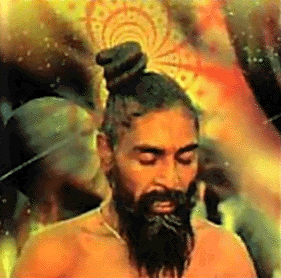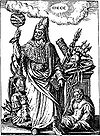The main traditions used by modern astrologers are Hindu Astrology (Jyotiṣa), Western astrology, and Chinese astrology.
Vedic and Western astrology share a common ancestry as horoscopic systems of astrology, in that both traditions focus on the casting of an astrological chart or horoscope, a representation of celestial entities, for an event based on the position of the Sun, Moon, and planets at the moment of the event. However, Vedic astrology uses the sidereal or fixed or constellational zodiac, linking the signs of the zodiac to their original constellations, while Western astrology uses the tropical or seasonal zodiac. Because of the precession of the equinoxes whose cycle is ~25,686 years long, during which the extensions of the polar axes describe circles, the twelve zodiacal signs in Western astrology no longer correspond to the same part of the sky as their original constellations, due to centuries of change. In effect, in Western astrology the link between sign and constellation was broken in approximately 222 AD, whereas in Vedic astrology the constellations remain of paramount importance. Other differences between the two traditions include the use of 27 (or 28) nakshatras or lunar mansions, each 13⅓ degrees wide, which have been used in India since Vedic times, and the systems of planetary periods known as dashas.
In Chinese astrology, a quite different tradition has evolved. By contrast to Western and Indian astrology, the twelve signs of the zodiac do not divide the sky, but rather the celestial equator. The Chinese evolved a system in which each sign corresponds to one of twelve "double-hours" that govern the day, and to one of the twelve months. Each sign of the zodiac governs a different year, and combines with a system based on the five elements of Chinese cosmology to give a 60 (12 × 5) year cycle. The term Chinese astrology is used here for convenience, but it must be noted that versions of the same tradition exist in Korea, Japan, Vietnam, Thailand and other Asian countries. It appears that this is a remnant of a more ancient system of Jupiterian astrology, an astrological system primarily based on the motion of Jupiter, which orbits the Sun every 11.89 years.
Western astrology has been the result of the knowledge of the earlier Indian/Vedic and Egyptian schools (each developed in their own right, and neither shows traces of the later Babylonian influences) being diluted and simplified in passing first through Persia/Babylon, and then through Greece, and later Europe. In modern times, these traditions have come into closer contact with each other, notably with Indian and Chinese astrology having spread in more direct form to the West, while awareness of the modern notions of Western astrology is still fairly limited in Asia, and is not considered useful. Astrology in the Western world has diversified among some in modern times. New movements have appeared that have jettisoned much of more recent traditional astrology to concentrate on different approaches, such as a greater emphasis on midpoints, or a more psychological approach. Some recent Western developments include modern tropical and sidereal horoscopic astrology, including constellational and star or point-based astrology (including aspects to the fundamental planetary dynamics, such as perihelions and aphelions, and nodal points resulting from the inclinations of the planets' revolutionary planes to the Earth's ecliptic plane); heliocentric astrology, cosmobiology; psychological astrology; sun sign astrology; the Hamburg School of Astrology; and Uranian astrology, a subset of the Hamburg School.













